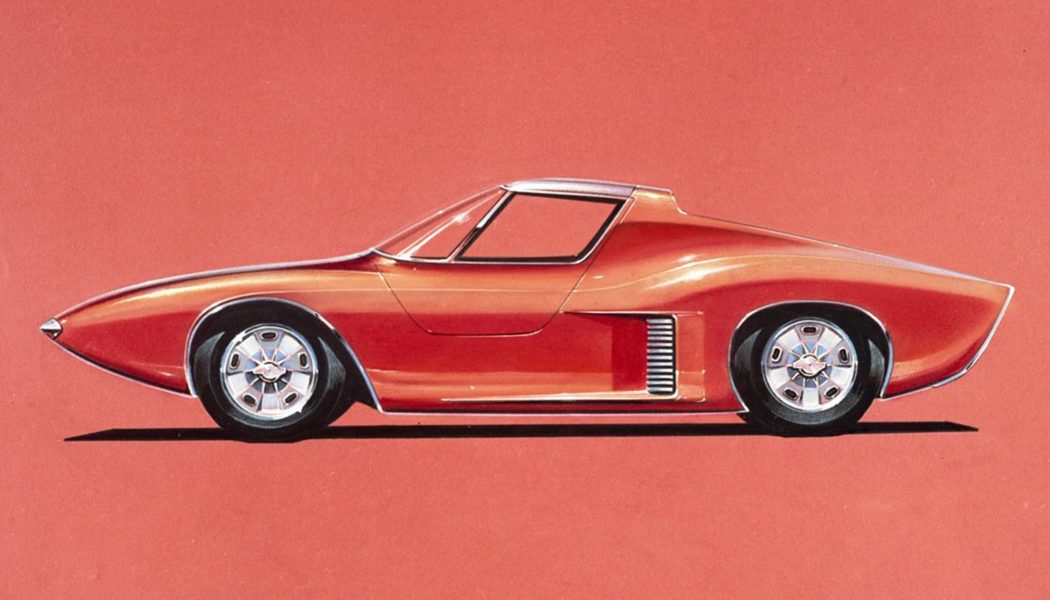Good racing films don’t happen very often, and rarely do they receive as much critical acclaim as 2019’s Ford v Ferrari. Propelled by the real-life drama behind Ford’s historic 1-2-3 sweep at the 1966 24 Hours of Le Mans, the movie brings the adrenaline and danger of racing in the 1960s to life, carefully weaving that action into a character-driven origin story of the Blue Oval’s most iconic race car: the Ford GT40. Though the film gets a good majority of the facts straight, it presents the viewer with a condensed version of Ford’s road to victory at Le Mans. And even at a bladder-busting two and a half hours, there just wasn’t time to mention the GT40-based road car Ford was considering from the outset of the program. Wait, a GT40-based road car?
That’s exactly what we asked ourselves while flipping through the digital pages of the GT Program book graciously provided by Ford archivist Ted Ryan. The GT Program book was a confidential document that circulated internally at Ford and outlined the automaker’s plans to beat Scuderia Ferrari at Le Mans. The document was the result of a nine-day study within the design and research departments and was meant to “serve as a basis for discussion in the concept stages” of the GT program. One key piece of evidence that shows just how serious Henry Ford II was about his feud with Enzo Ferrari is the date stamped on the report: June 12, 1963, just 21 days after negotiations to buy Ferrari fell through.
But the GT Program book doesn’t just detail the proposed Le Mans race car. It also pitches the idea of a road car based on the same chassis and mid-engine mechanicals of the Ford GT (which would later be renamed GT40 for its 40-inch overall height). Because “its basic environment is that of a road vehicle,” the roadgoing model was designed with certain compromises to make it more accommodating off the track. First off, it was six inches taller, a distinction appropriately illustrated by the driver’s oh-so-1960s hat. It was also roughly 10 inches longer and 326 pounds heavier, though still a featherweight at just under 2,000 pounds. A cutaway sketch further reveals a spare tire in the frunk and a futuristic bubble canopy. Additionally, it would have received a more road-friendly suspension, better noise insulation, a 289-cubic-inch V-8 out of the Fairlane, and a unique body.
If that body looks familiar, that’s because it’s basically the 1962 Ford Mustang I concept with a roof. You see, the very first vehicle to bear the Mustang name was an ultra-sleek, topless, mid-engine show car. Lee Iacocca and his team, known as the Fairlane Group, eventually settled on a more economical front-engine layout for the Mustang, but apparently Ford still held out hope for a mid-engine sports car. The Mustang I’s shark nose front end with pop-up headlights is maintained in the sketches of the GT road car, which the document refers to only as “Sports Car Project.”
Though there were more than 100 roadgoing GT40s built to satisfy homologation requirements, including the extremely rare road-optimized MkIII, the Sports Car Project presented in the initial proposal never came to fruition. But the race car, of course, did. The sketches of the GT that accompany the Sports Car Project in the GT Program book bear a vague resemblance to the car that would eventually race at Le Mans, and that look was further refined once it was rendered in clay. Theses photos of the first clay model of the GT are dated June 19, 1963, and you can start to see a lot more of the GT40 we know today in it (along with a little bit of Ferrari Testarossa with those side strakes).
So there you have it. Ford originally wanted to build a road-car yin to its race-car yang. It’s a fun nugget of info that can enrich your perspective the next time you watch Ford v Ferrari.
More Videos









